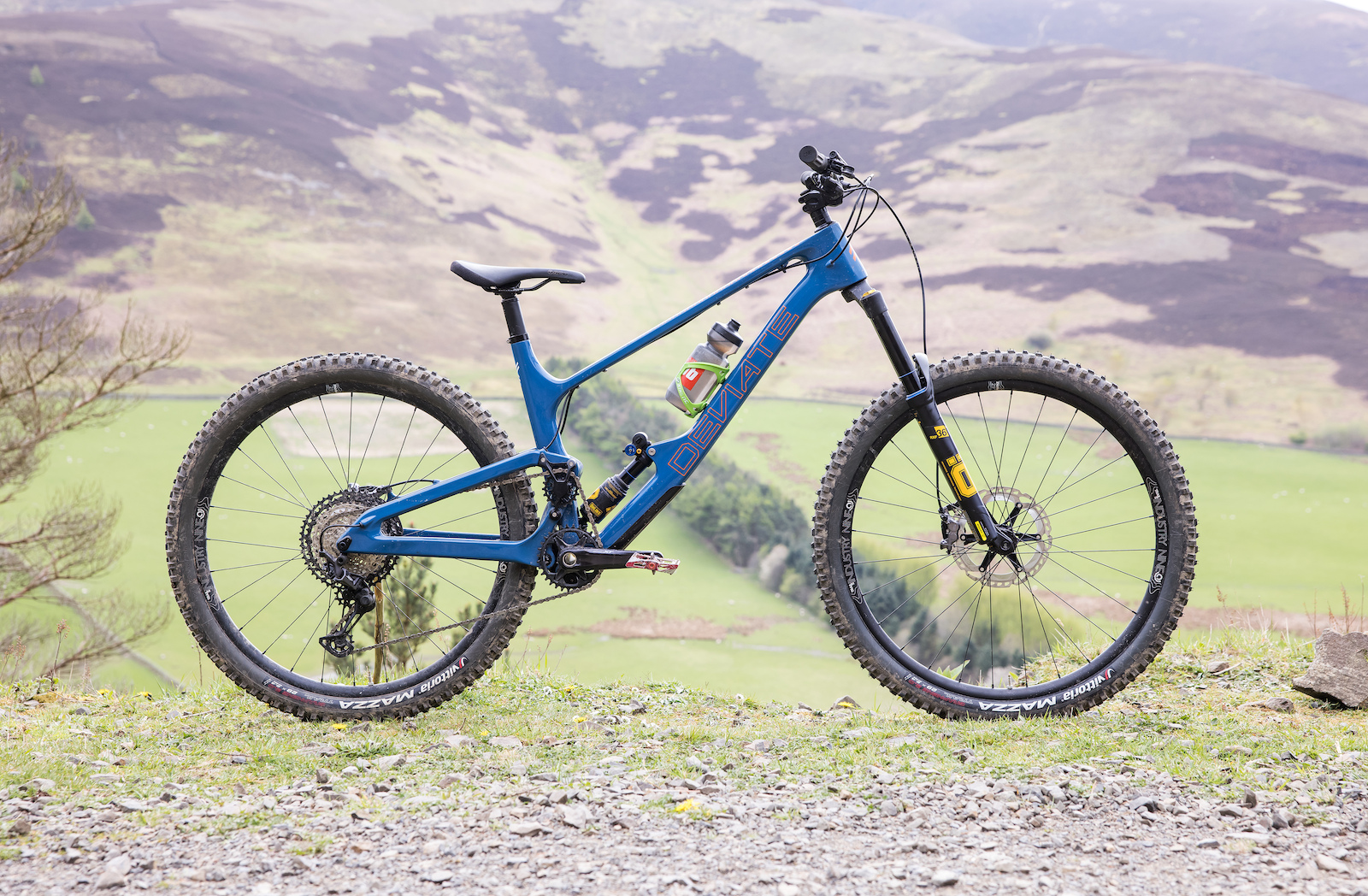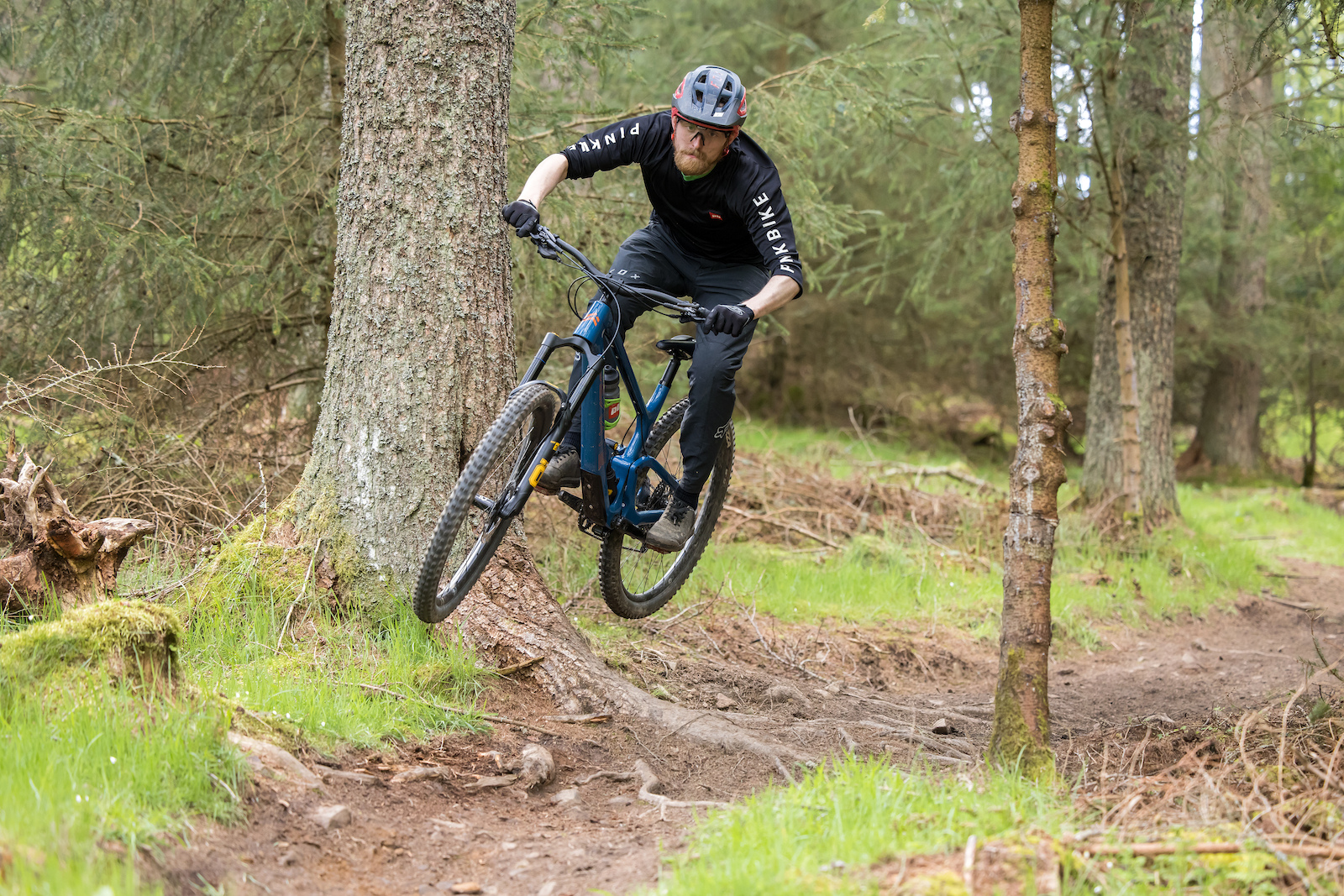Now that the Highlander is over three years old, they’re launching the Highlander 2, which, unlike the film, aims to improve on the original. It’s got a lighter frame, tweaked suspension kinematics, and revised geometry.
• Intended use: Trail riding
• Wheel size: 29″
• Rear-wheel travel: 145mm
• Fork travel: 160mm
• Head angle: 65-degrees
• Seat angle: 77-degrees
• Lifetime warranty & crash replacement
• Weight: 14.6 kg / 32lb (as tested)
• MSRP: $4000 USD / $5000 CAD / €4320 / £3720 (frame & shock)
• More info: www.deviatecycles.com
While the Claymore is the dedicated enduro weapon, Deviate describes the Highlander 2 as “Your local trail companion, all-day epic explorer, bike park ripper and weekend racer. The Highlander 2 is designed to adapt to what you want to ride, when you want to ride it.” In reality, it blurs the line between trail and enduro, but in a good way.
It serves up 145 mm of rear wheel travel and is designed for a 160 mm fork and 29″ wheels front and rear. For now, it’s only available as a frame or frame + shock, but a full build (as pictured) should be available before too long.
Contents
Frame Details
Geometry & Sizing
Suspension Design
Specifications
Setup
Climbing
Descending
Technical Report
What’s the Best Value?
How Does it Compare?
Pros & Cons
Pinkbike’s Take
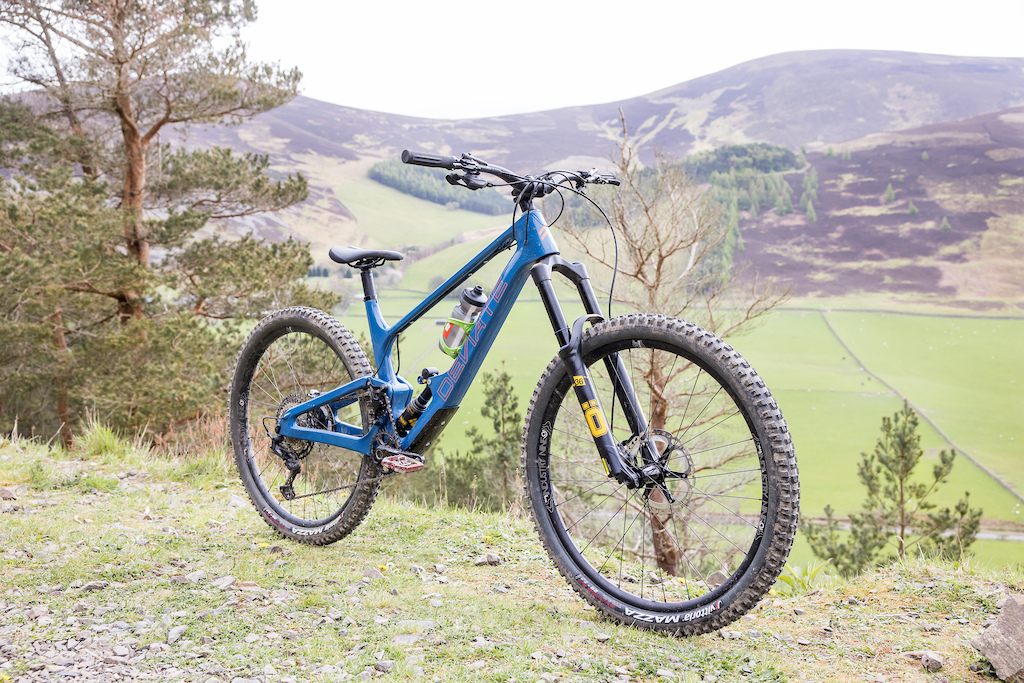

The full-carbon frame shares the same hardware (save the links that drive the shock) with the original Highlander and the Claymore, including the idler wheel and axle. The swingarm is the same as the one you’ll see on the Claymore, but the front triangle is unique to the Highlander 2. Deviate say it’s “a fair bit lighter” than the original Highlander, but thanks to a new carbon layup, they say it’s just as strong.
It takes a standard 126-link chain, so there is no need to join chains together. The pivots and idler wheel run on high-quality Enduro Max bearings with twin lip wiper seals and grease ports to help keep them all running in wet weather.
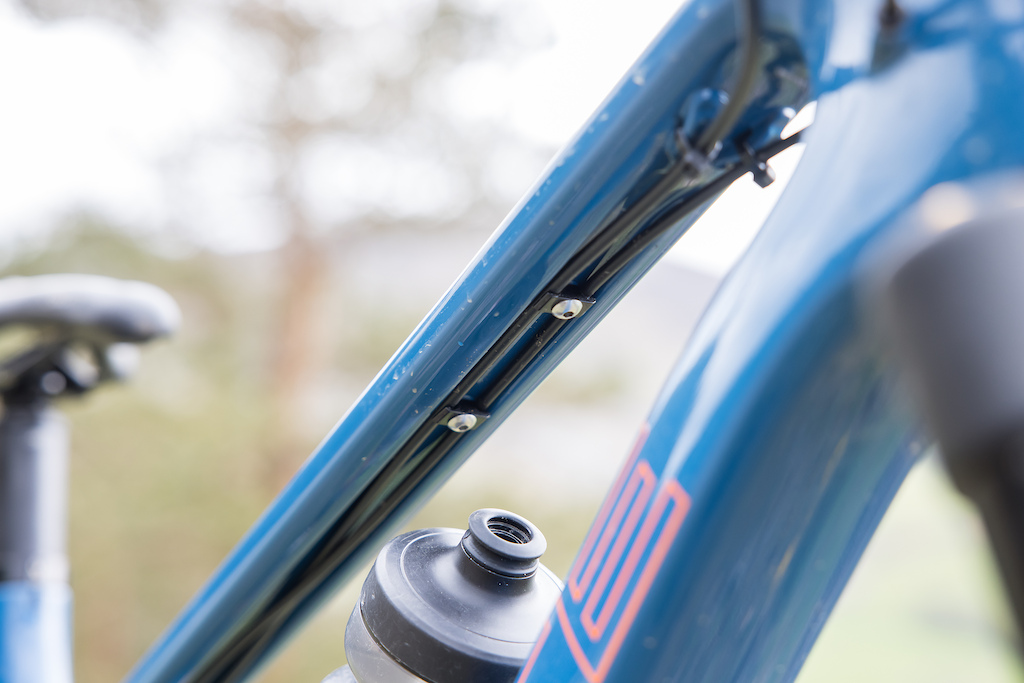
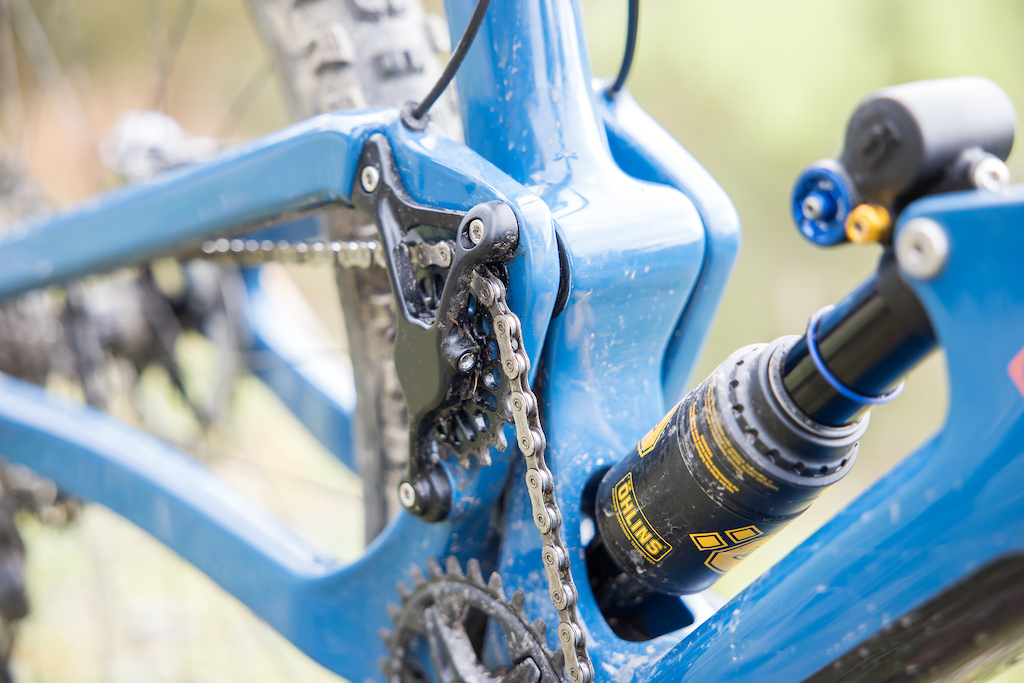
The cables run along the bottom of the top tube in a little channel, making replacements easier while keeping them hidden from view. They do run internally through the rear triangle though, so you’ll still need to detach brake hoses to replace the brakes.
There’s a bonded chainstay protector plus a bolt-on downtube protector that looks like it’s hiding something, but there’s no internal storage here. There is room for a full-sized water bottle above the downtube plus accessories can be hung from under the top tube.
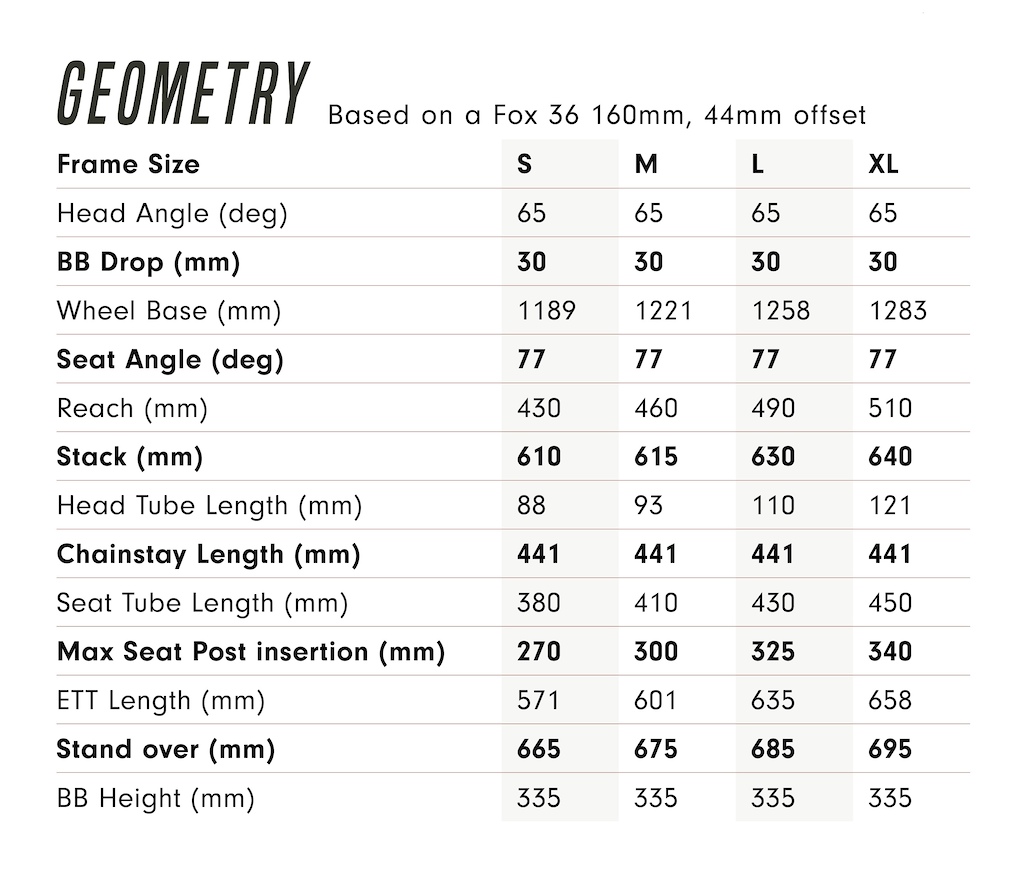
On paper, the head angle is only half a degree slacker than the original Highlander, but the seat tube is two degrees steeper. The reach has grown too, such that a Large has a similar reach to the old XL. A size small has been added to the range for those who don’t want a bigger bike.
I measured the head angle of my test bike at 64.5 degrees and the wheelbase at 1,295 mm, which is a touch longer & slacker than the official numbers above. That makes it pretty stable for a trail bike, but these days, it’s not the longest either. The BB height with 2.4″ Vittoria Mazza tires measures 345 mm.
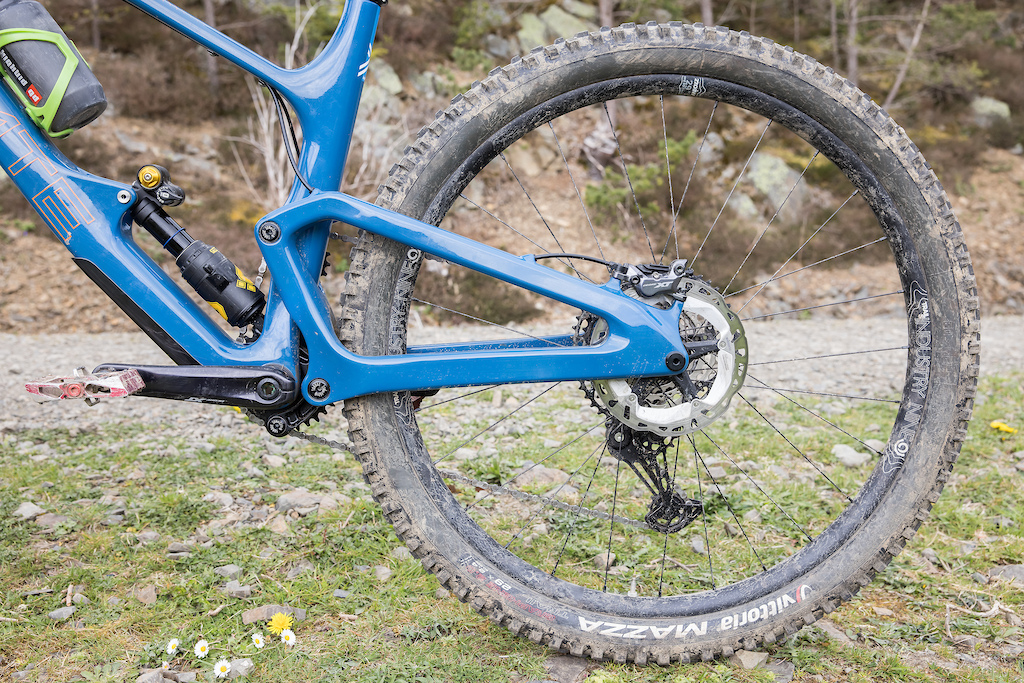
The 18-tooth idler wheel is connected directly to the swingarm. A link at the bottom of the swingarm pulls a rocker which pivots around the bottom bracket and drives the shock.
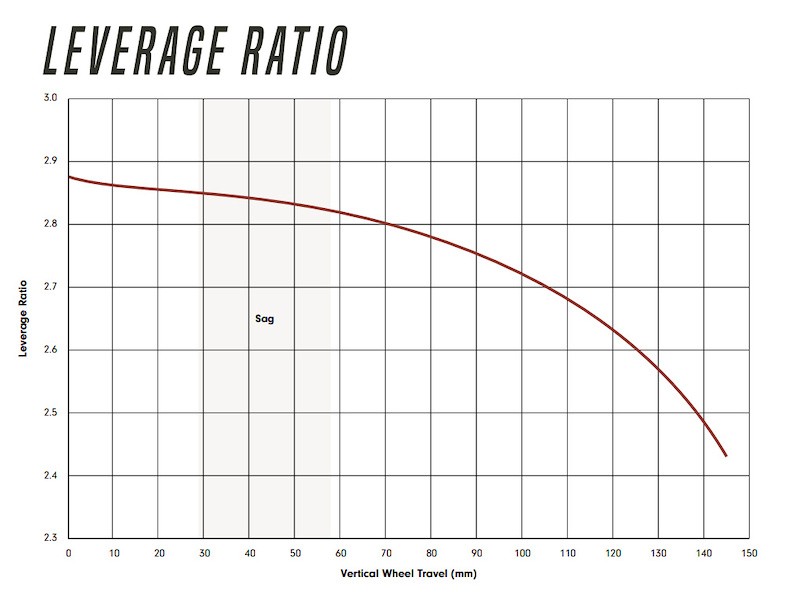
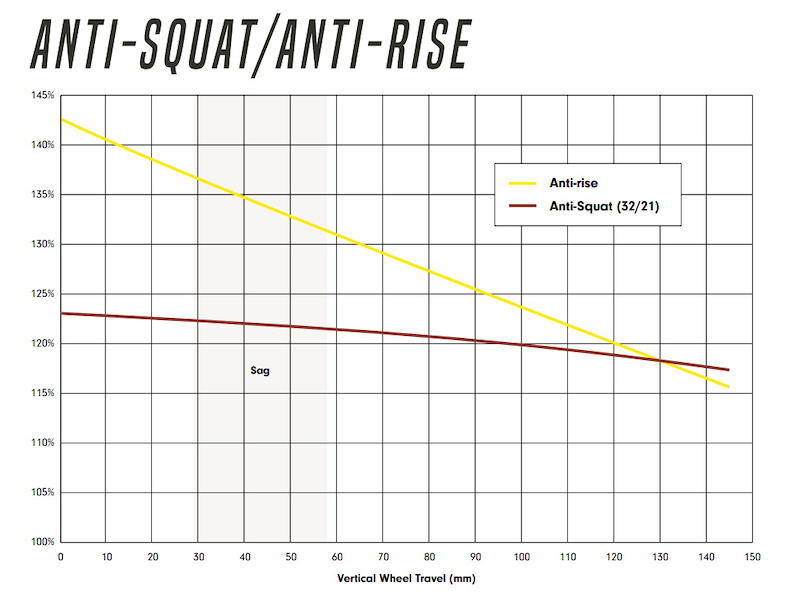
The leverage ratio between the rear axle and the shock starts at 2.82 and ends up at 2.19 (the lower the leverage ratio, the stiffer the suspension). That makes the suspension about average in terms of progressiveness, with 22% overall progression. Most of that change in leverage ratio happens toward the end of the travel though, so it’s relatively linear through the first two-thirds of the travel, but as the leverage drops downwards towards the bottom out, the suspension forces ramp up. This may result in a soft and supple ride in the middle part of the travel, with a firm end-stroke.
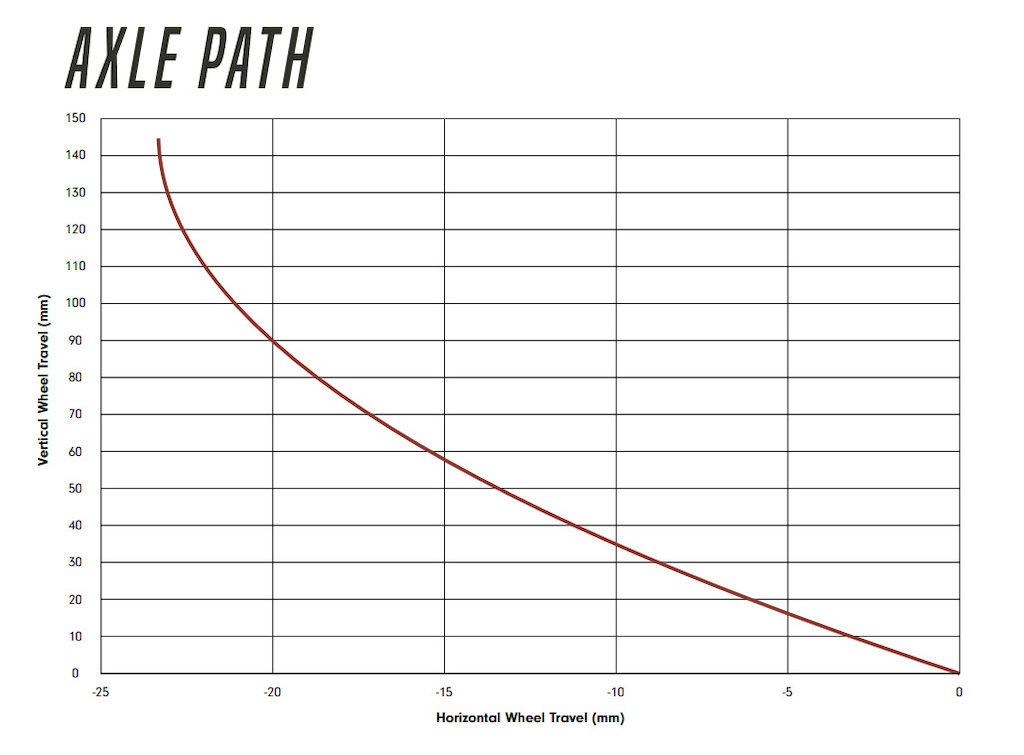
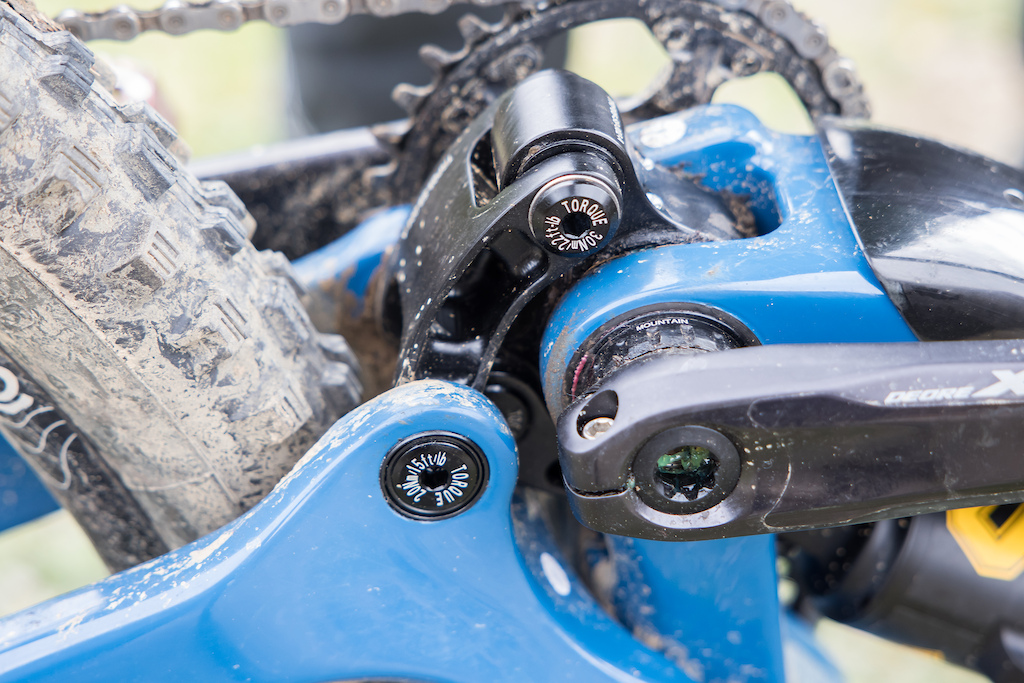
Anti-squat is on the high side, according to Deviate’s numbers, sitting above 120% throughout most of the travel when in the middle of the cassette.
The trait that sets the Deviate apart from the crowd is the anti-rise. This is how much the brake force acts to compress the suspension and keep it from extending as your weight transfers to the front wheel when you’re hard on the anchors. The high-single-pivot design means the brake caliper is trying to rotate the swingarm clockwise (if viewed from the drive side) and so compress the suspension, to a much greater extent than low-single pivots or many four-bar layouts. The result is that the bike squats into its rear suspension travel when the back brake is applied, helping to avoid pitching forwards.
| Specifications | |
| Release Date | 2023 |
| Price | $8500 |
| Travel | 145 mm |
| Rear Shock | Ohlins TTX Air, 55mm |
| Fork | Ohlins RXF 36, 160 mm |
| Headset | Cane Creek |
| Cassette | Shimano XT, 10-51 T |
| Crankarms | Shimano XT, 170 MM, 32 T |
| Chainguide | N/A |
| Bottom Bracket | Shimano XT |
| Pedals | N/A |
| Rear Derailleur | Shimano XT |
| Chain | Shimano XT |
| Front Derailleur | N/A |
| Shifter Pods | Shimano XT |
| Handlebar | OneUp Carbon bar, 20x 800 mm |
| Stem | OneUp, 40 mm |
| Grips | OneUp |
| Brakes | Shimano XT four pot, 200/180 mm |
| Wheelset | I9 Trail S |
| Hubs | I9 Trail S |
| Spokes | I9 Trail S |
| Rim | I9 Trail S |
| Tires | Vittoria Mazza, Trail, 2.4″ |
| Seat | SDG |
| Seatpost | OneUp, 240 mm |
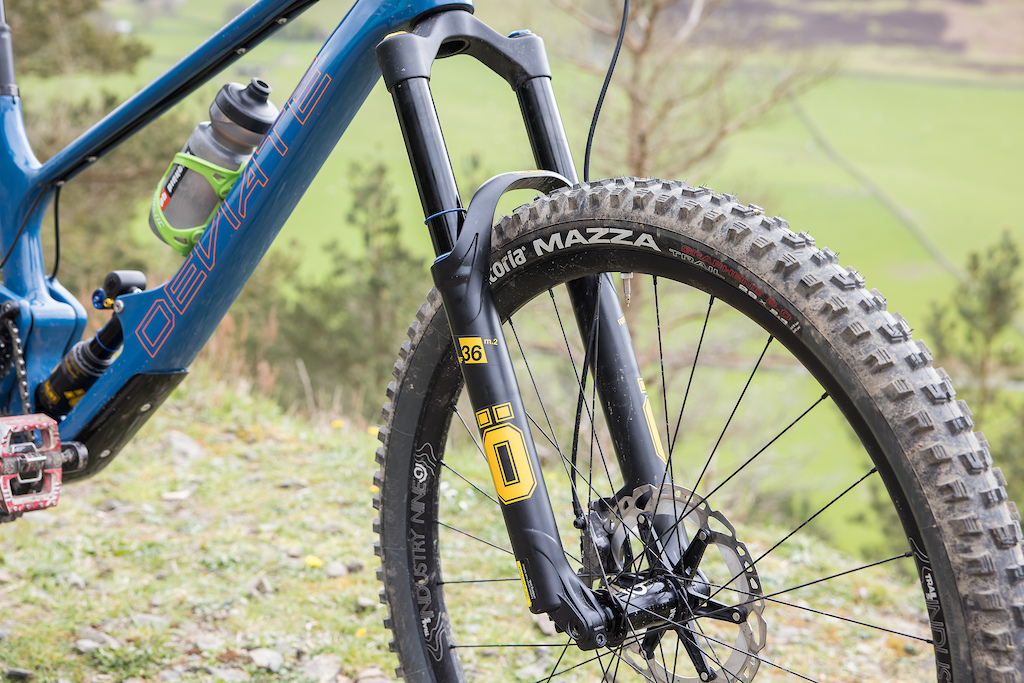
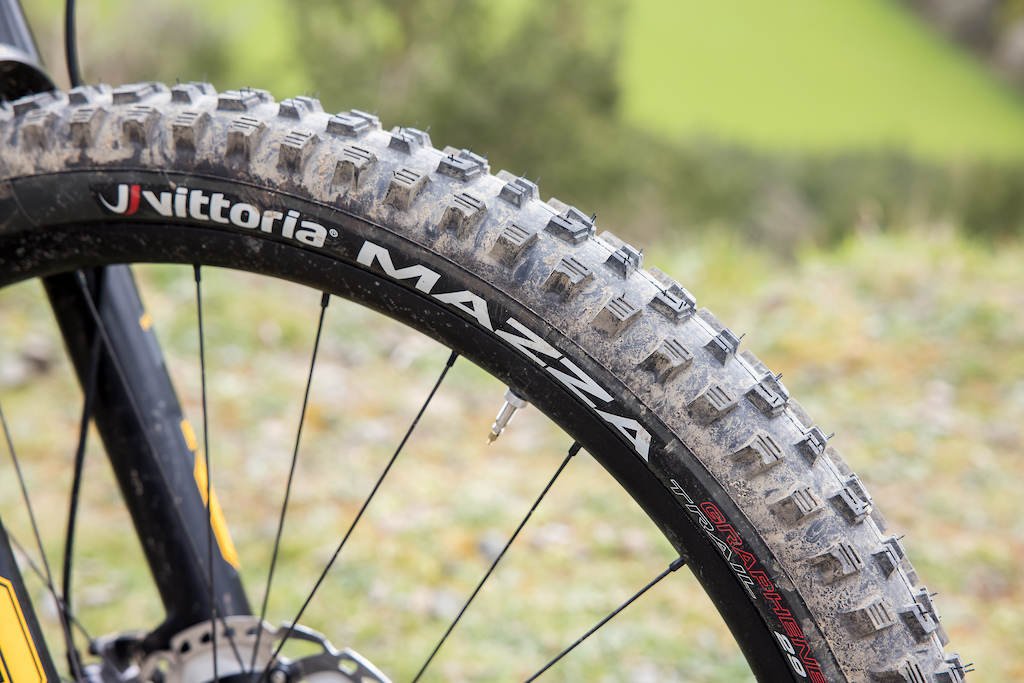
For now, it’s only available as a frame only or a frame and Öhlins TTX2 air shock. Deviate say the full build as shown in this article Shimano XT, Ohlins RXF 36 fork, OneUp components) will be available soon.
The prices are as follows:
USA: $3600 USD
Canada: $4250 CAD
EU: €3600 EUR including VAT
UK: £3120 GBP including VAT
USA: $4000 USD
Canada: $5000 CAD
EU: €4320 EUR including VAT
UK: £3720 GBP including VAT
USA: $8500 USD
Canada: $10250 CAD
EU: €7920 EUR including VAT
UK: £7050 GBP including VAT
For now, the M,L, and Xl sizes are available in two colors: Iona Blue (as tested) and Isla Sand. The size small is expected to land in August.
I spent a while going back and forth on shock settings and settled on 190 psi, which gave me just over 32% sag. I backed off the low-speed compression to fully open and set the rebound on the faster side (9 clicks from closed). I set the fork to 110 psi, with 230 psi in the ramp-up chamber; the rebound was fully open and the compression was relatively open, depending on the terrain. I cut the bars to 770 mm and set them as high as they would go. Tire pressures were 22 & 26 psi.
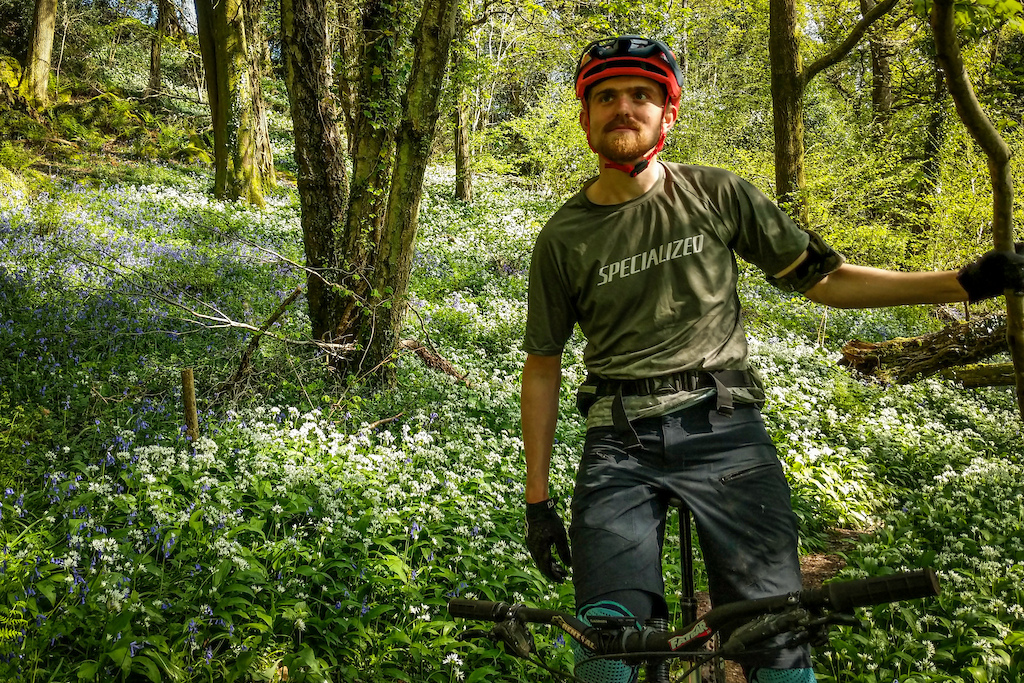
Location: Tweed Valley, Scotland
Age: 30
Height: 6’3″ / 191cm
Inseam: 37″ / 93cm
Weight: 189 lbs / 86 kg, kitted
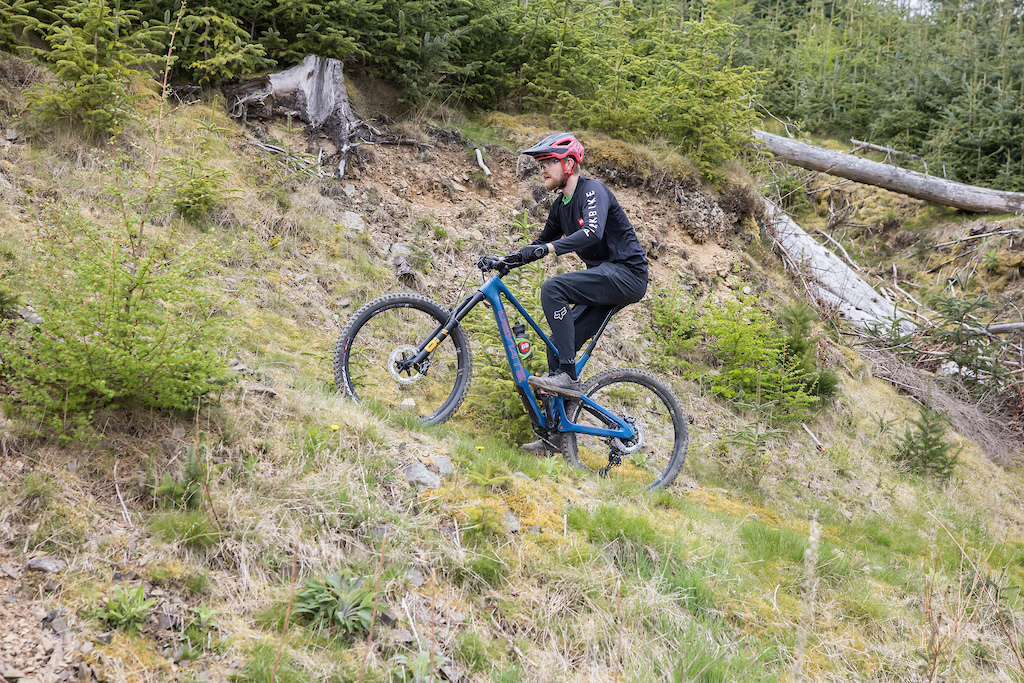
On the climbs, it’s good but not the best. There’s very little pedal bob and the suspension stays high in its travel on the steeps. At 14.6 kg / 32lb, the build I have is relatively light too. But while the 77-degree seat tube angle is no slouch, I prefer to be even further forward to really attack steep and prolonged climbs. And yes, I rode it with the saddle all the way forwards.
The idler was quiet throughout my test period, which isn’t always the case. My previous testing suggests an idler only adds around two per cent drag with a fresh chain, but this number could increase as chains get worn or dirty. You certainly notice the noise increase as the lube wears off.
The high pivot design does come into its own on slow and bumpy climbs, where the rear wheel can move up and over the bumps without upsetting the rhythm of your pedalling as much. Overall, the Highlander 2 is a very capable climber, but it’s not what I’d choose if climbing speed was a top priority.
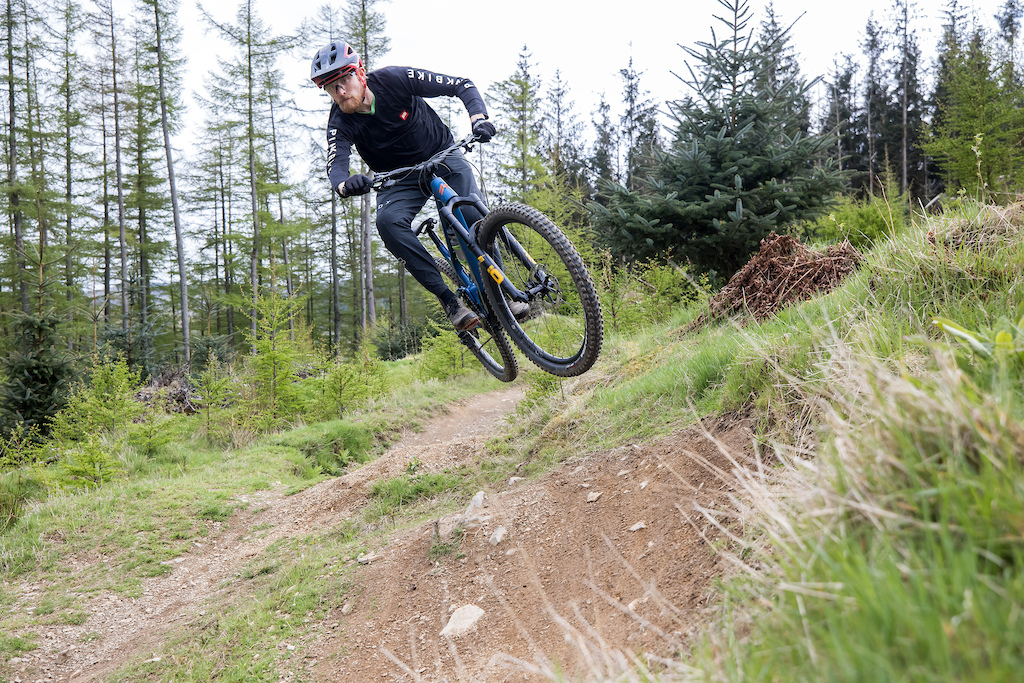
On the descents, I found it easy to ride confidently almost straight away. The handling is well-balanced for aggressive trail riding, with easy maneuverability and plenty of stability for most conditions. For the tighter trails here in the Tweed Valley, it’s well-suited. The head angle never felt too steep, even in the nastiest, steepest turns where the similarly slack Atherton Am.150 was a little less surefooted. I think the reason for that is that the high-single-pivot suspension hunkers down into its travel when braking hard, which slackens and lowers the geometry just when you need stability most.
As for harshness under braking – I didn’t feel any. The suspension is reasonably sensitive and predictable whether on the brakes or off. But while some say that high pivot suspension makes a bike swallow bumps like it has more travel, I don’t think that’s necessarily the case. I ended up running a shade over 30% sag, with the low-speed compression relatively open, and it’s not a magic carpet ride. Don’t get me wrong: it’s supple enough, but even though I was using all the travel when warranted, I wouldn’t say the high pivot suspension is punching above its travel category. The Ohlins RXF 36 fork isn’t the most sensitive either, so while the geometry and stability are very enduro-like, it’s the suspension that reminds you it’s not quite as forgiving as a modern enduro bike.

For me, the 440 mm chainstay (which grows to around 453 mm at sag and 463 mm at bottom-out) strikes a good balance; the sprawling back-end makes it easy to keep good traction on the front wheel through flat turns, but it’s not so long that manuals and bunnyhops become too awkward. On the other hand, shorter riders might find that growing chainstay length makes it harder to loft the front wheel, and even for me, it took a few attempts to get the feel for the balance point.
The Vittoria tires were a little dicey on wet rocks and I’d prefer the bars 10 mm higher, but these are quibbles with the build, which isn’t available to buy for now and may change.
Overall the Highlander 2 is a good option for people who like their trails on the technical and chunky side. It’s not quite a full-blown enduro bike (they make the Claymore for that), but it offers a good mix of stability and agility for what someone is inevitably going to call “Down Trail”.
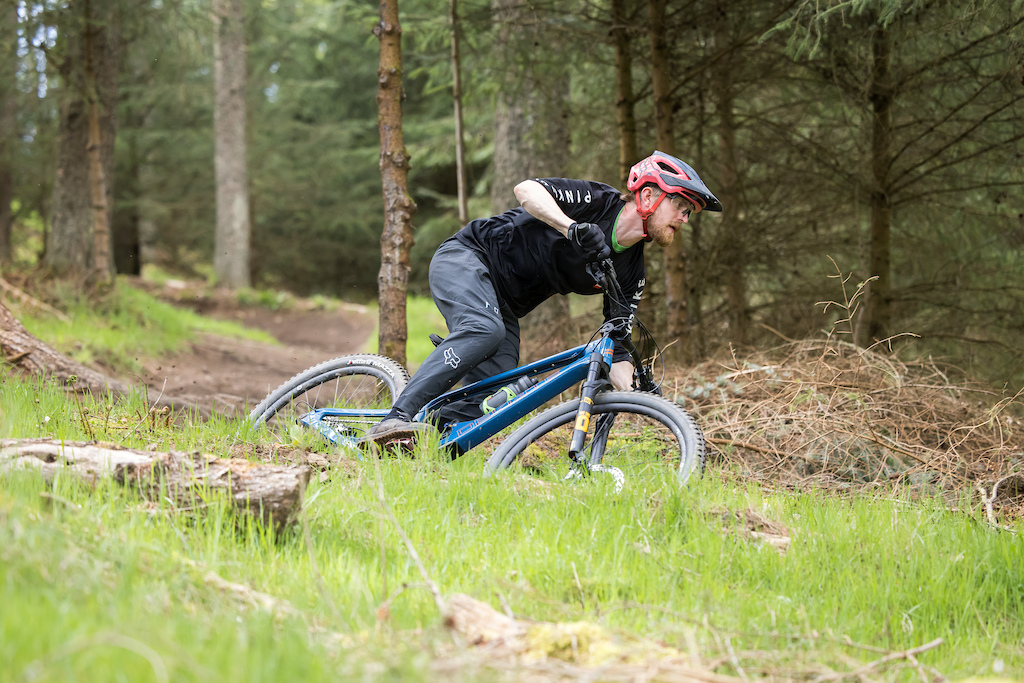
Vittoria Mazza tires: The Mazza’s well-spaced knobs work well for loose muddy conditions, but the compound lacks grip on wet rocks and roots. The 950-gram trail casing rolls well, but I picked up a snakebite early on in testing, and I think the Highlander 2’s stability justifies something a little burlier. Vittoria recently launched a version with a softer compound and thicker casing, which might be the ticket.
Ohlins RXF36 fork: It’s a solid performer but it doesn’t quite match the beginning stroke sensitivity of the Fox 36, and I needed to have the rebound fully open for it to recover fast enough.
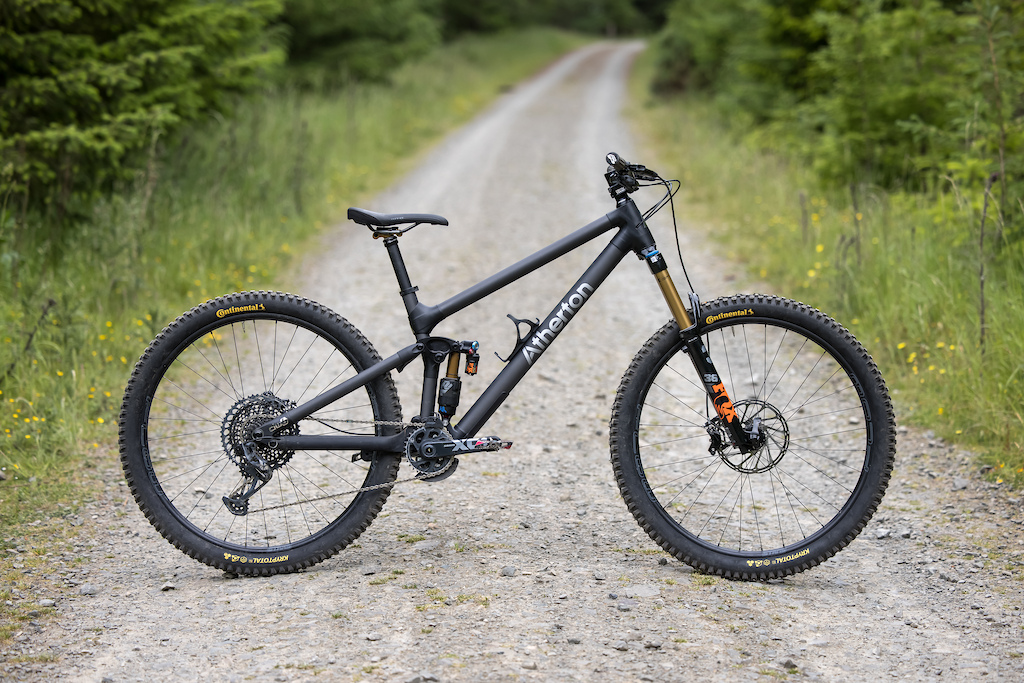
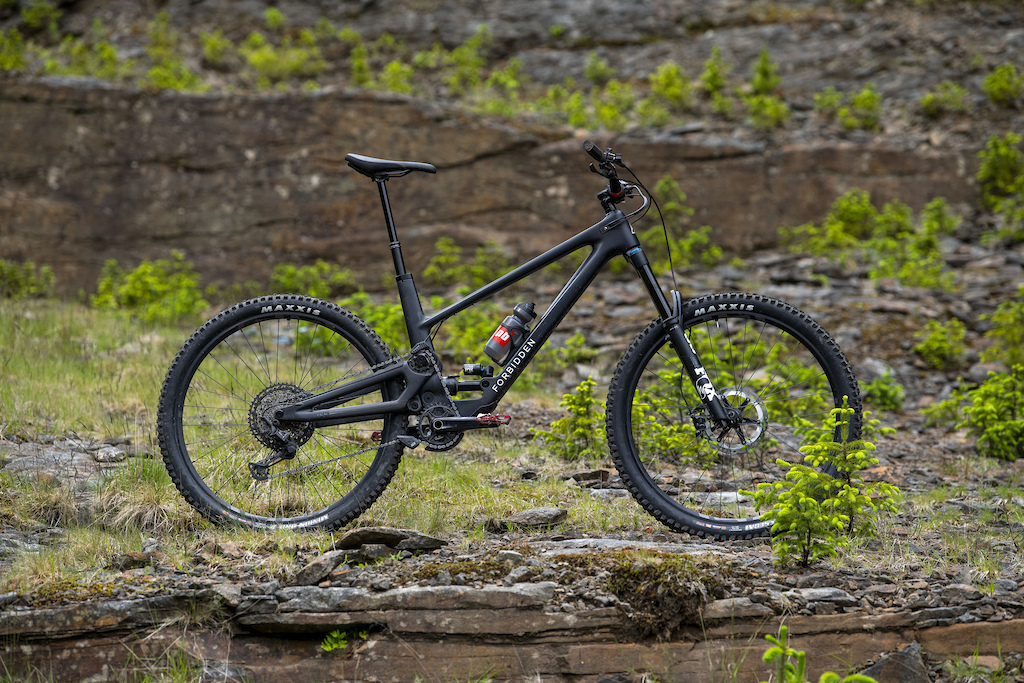
Forbidden are another brand that only make high-pivot bikes. The HL2 fits between the 130 mm travel Forbidden Druid and the 150 mm travel Dreadnought, but having riddden both, I think it rides more like the Dreadnought. The Forbidden’s longer wheelbase and suppler 170 mm fork make it more forgiving on fast, rough sections, but in both cases, the rear suspension didn’t feel like it had significantly more travel than it did, despite what some high-pivot proponents claim. The real difference is in the Dreadnought’s size-specific chainstay length, which sounds like a good thing, but the XL Dreadnought’s 464 mm chainstay length (growing to 480 mm at sag) wasn’t without drawbacks. While traction and stability were superb, it made manuals tricky and tight and steep sections awkward, The Deviate’s 440mm stays (453 mm at sag) strike a better compromise in my book.
In terms of other bikes that tread the line between trail and enduro, the Atherton AM.150 and Canyon Spectral spring to mind. Although the Atherton has a similar head angle on paper, the Deviate feels slacker and more stable in the steep stuff. The Atherton’s more consistent chainstay length takes less getting used to when pulling manuals or ripping through the kind of tight berms you’d find on a pump track – although I don’t think this is a big problem for the Deviate, it just takes different timing. While the Highlander climbs well, the Atherton is probably a little more efficient.
+ Excellent stability when things get hectic, without being too lethargic on tight stuff.
+ Long chainstay (once into the travel) gives good cornering balance, especially for tall riders
+ Capable on the climbs, especially bumpy ones
– Idler adds a little drag and complexity
– Not inexpensive
– Growing chainstay may take some getting used to when popping manuals.

